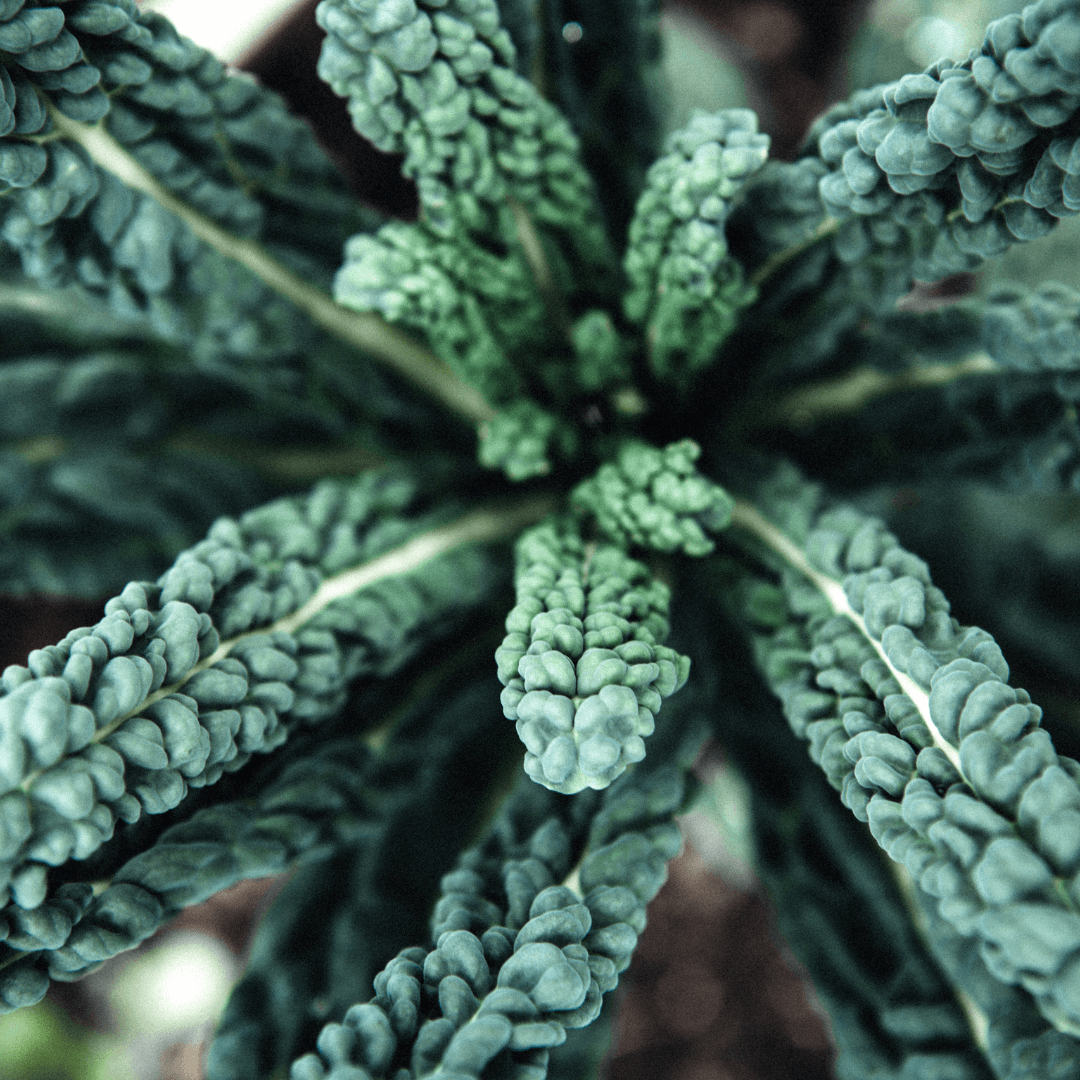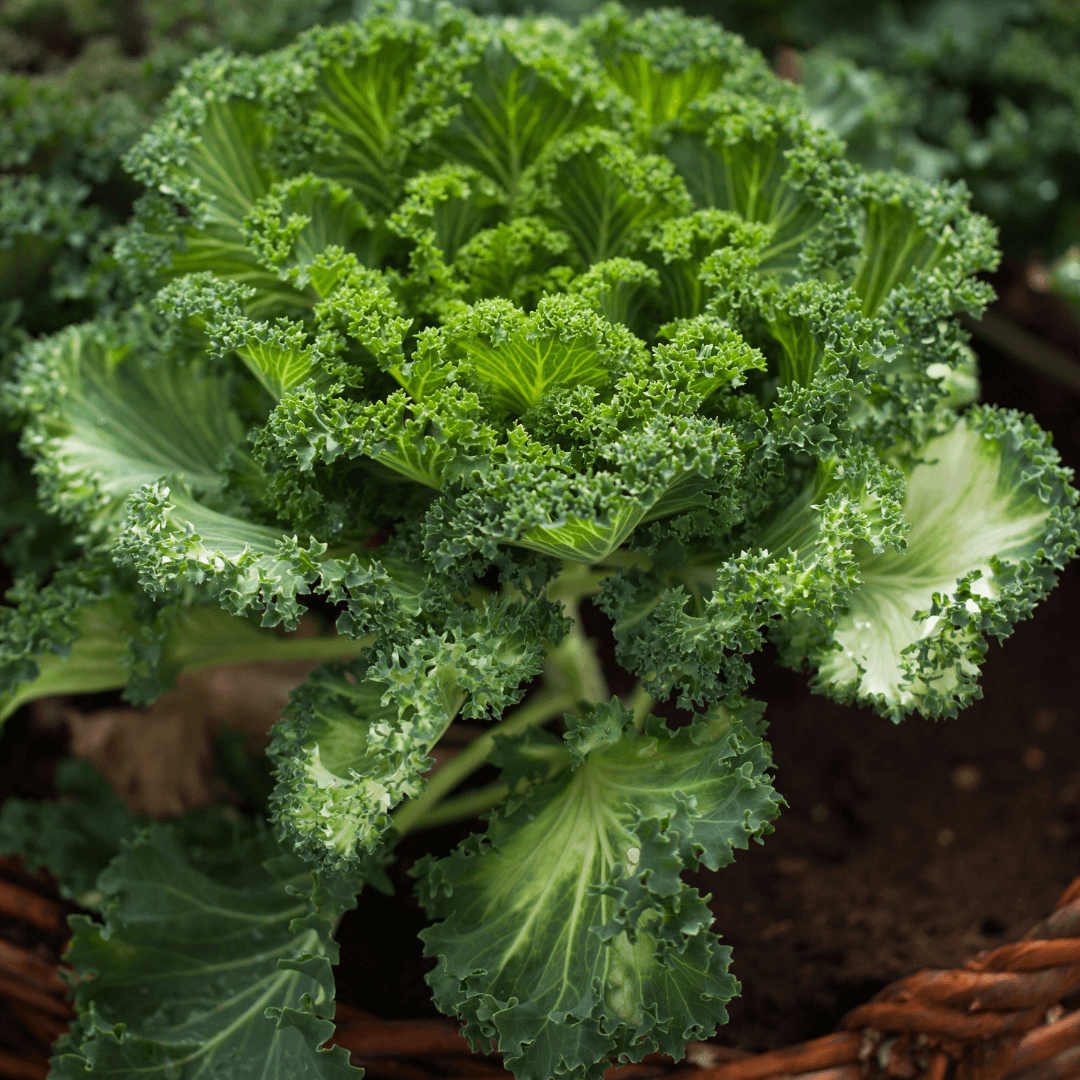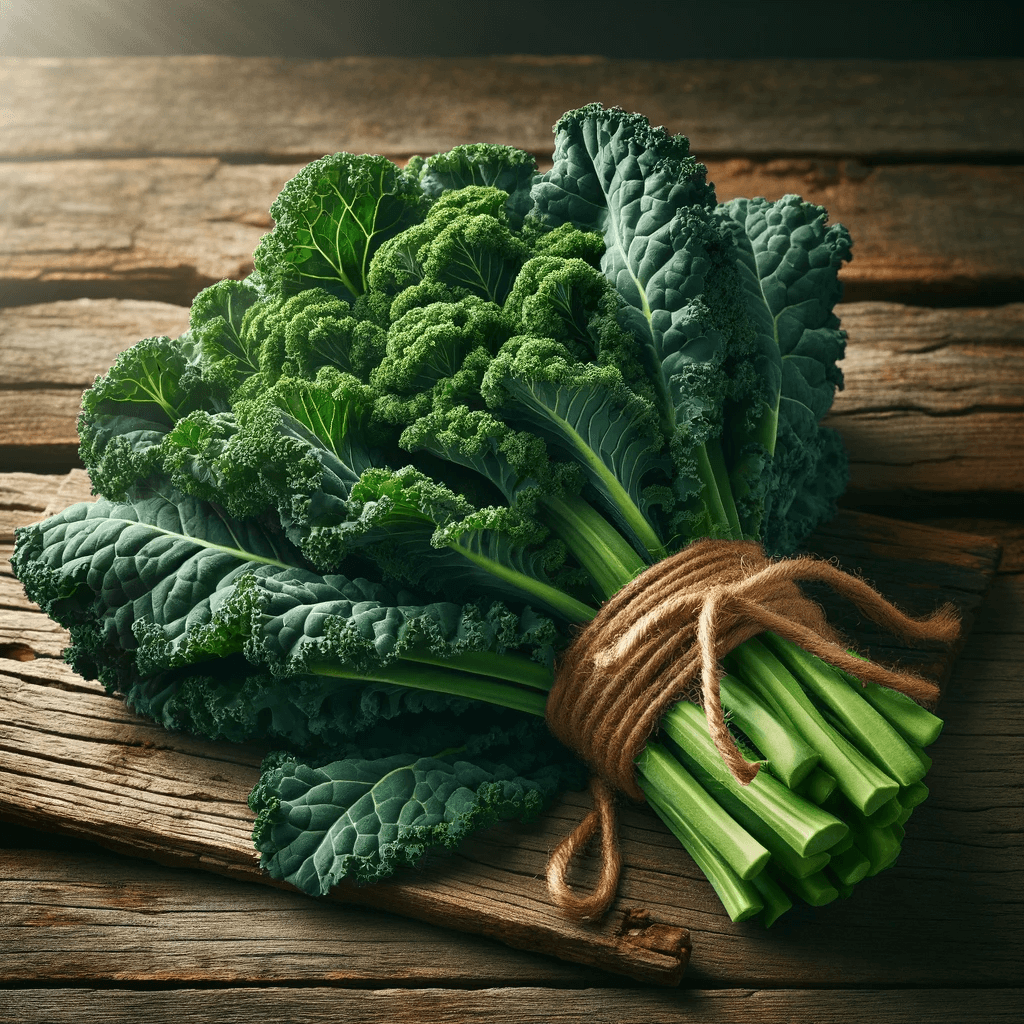As a female gardener, I've always been a fan of kale, particularly the lacinato kale variety, also known as dinosaur kale or Tuscan kale. With its blue-green leaves and delicious taste, it's no wonder that kale has become a popular plant among gardening enthusiasts. In this step-by-step guide, I'll walk you through the process of how to grow lacinato kale from seed. With patience, care, and the right conditions, you'll find that kale is easy to grow and a rewarding addition to your garden.
1. Plant Characteristics: Lacinato Kale at a Glance
History of the Seed
Lacinato kale has been cultivated in Italy for centuries and has become a staple of Mediterranean cuisine. It was introduced to North America in the early 19th century and quickly gained popularity due to its taste and hardiness in cold weather.
Days till Maturity
Lacinato kale typically matures within 60-70 days, although it can be harvested earlier for tender, baby leaves. Cold temperatures can enhance the sweetness of the leaves.
Planting Depth
Plant lacinato kale seeds about 1/4 to 1/2 inch deep in the soil.
Plant Spacing
Space lacinato kale plants about 12-18 inches apart, with rows spaced about 18-24 inches apart.
Days to Germination
Lacinato kale seeds usually germinate in 5-8 days under the right conditions.
Start Indoors or Direct Sown
Lacinato kale can be started indoors or direct sown into the garden. Starting seeds indoors offers better control over the growing conditions and can give the plants a head start. Direct sowing is more straightforward and involves less handling of the seedlings.
Full Sun or Partial Shade
Lacinato kale grows best in full sun but can tolerate partial shade. Aim for at least 6 hours of direct sunlight per day for optimal growth.
When to Harvest
Lacinato kale can be harvested once the leaves reach a desired size, typically 8-10 inches long. Harvesting can continue throughout the growing season until the first hard frost.
Plant Height
Lacinato kale plants can grow up to 2-3 feet tall.
Plant Width
Lacinato kale plants can spread 1-2 feet wide.
Lacinato Kale Seeds
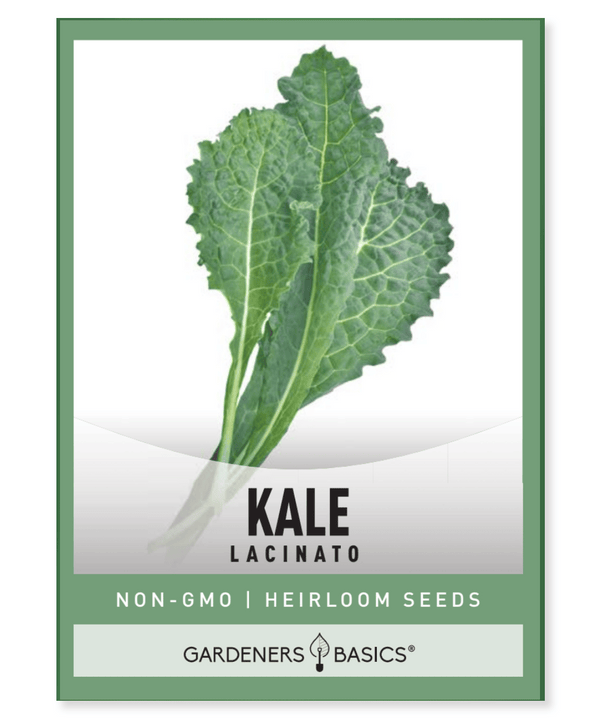
$2.49
Lacinato Kale Seeds – Heirloom, Non-GMO, Non-Hybrid, Open-Pollinated | Planting and Growing Guide Elevate your garden with Lacinato Kale seeds, a must-have for any home gardener seeking nutrient-rich leafy greens! Also known as Dinosaur Kale, Tuscan Kale, or Black Kale,… read more
2. Preparing to Plant Kale
Before planting your dinosaur kale seeds, there are a few things you'll need to prepare.
Soil Requirements
Lacinato kale grows best in well-drained soil with a pH between 6.0 and 7.0. The soil should be rich in organic matter, such as compost or aged manure, to provide essential nutrients for the plants.
Soil Temperatures
Lacinato kale prefers soil temperatures between 45-75°F (7-24°C). Early spring is the perfect time to plant kale seeds, as soil temperatures are starting to warm up after the fall frost.
Plant Spacing
When planting lacinato kale seeds, space them about 12-18 inches apart to give the plants room to grow. Rows should be spaced about 18-24 inches apart.
3. Planting Lacinato Kale Seeds
Lacinato kale seeds can be started indoors or direct sown in the garden. Here's a step-by-step guide for each method:
Start Indoors
- Plant kale seeds in seed trays or small pots filled with a seed-starting mix about 4-6 weeks before the last expected frost date.
- Plant seeds about 1/4 to 1/2 inch deep and cover them lightly with soil.
- Keep the soil consistently moist and maintain a temperature between 70-75°F (21-24°C) for optimal germination.
- Seedlings should emerge in 5-8 days.
- Transplant seedlings outdoors when they have 2-4 true leaves and are about 3 inches tall.
Direct Sow
- Once the soil temperature is above 45°F (7°C) and there is no risk of frost, plant kale seeds directly into the garden bed.
- Plant seeds about 1/4 to 1/2 inch deep and cover them lightly with soil.
- Space seeds about 12-18 inches apart with rows 18-24 inches apart.
- Keep the soil consistently moist until seeds germinate. Seedlings should emerge in 5-8 days.
4. Caring for Lacinato Kale Plants
Sun Requirements
Lacinato kale plants grow best in full sun, but they can also tolerate partial shade. At least 6 hours of direct sunlight per day is recommended for optimal growth.
Watering
Kale plants require consistent moisture, so provide at least 1 inch of water per week through rainfall or supplemental watering. It's best to water the plants at the base to reduce the chance of leaf diseases.
Fertilizing
Apply a balanced, slow-release fertilizer at planting time and again mid-season to promote healthy growth. Alternatively, you can use compost tea or fish emulsion every 3-4 weeks.
Mulching
Adding a layer of mulch around the base of the plants helps to retain moisture, suppress weeds, and regulate soil temperature. Use organic mulch, such as straw or wood chips, for the best results.
5. Pest and Disease Management
Cabbage Worms and Cabbage Loopers
Cabbage worms and cabbage loopers are common pests that can cause significant damage to lacinato kale leaves. To control these pests, use floating row covers to prevent egg-laying, or apply Bacillus thuringiensis (Bt) as a biological control.
Aphids
Aphids can be managed by releasing beneficial insects, such as ladybugs or lacewings, into the garden. Alternatively, you can use a strong spray of water to dislodge them from the plants or apply insecticidal soap as a control measure.
Diseases
To prevent fungal diseases, practice crop rotation and ensure proper air circulation around the plants. If a disease does occur, remove and dispose of infected plants to prevent the spread of pathogens.
6. Harvesting Lacinato Kale
Lacinato kale can be harvested once the leaves reach a desired size, typically 8-10 inches long. To harvest, simply cut the outer leaves about an inch above the ground, leaving the central growing point intact for continuous growth. You can continue harvesting kale throughout the growing season until the first hard frost.
7. Plant Size and Growth Habit
Lacinato kale plants can grow up to 2-3 feet tall and 1-2 feet wide. The plants have an upright growth habit, making them an attractive addition to the garden.
Seed Safe Survival Seed Kit - 35 Variety Pack

$29.95
$49.95
Seed Safe Survival Seed Kit: The Ultimate Heirloom Collection for Self-Sufficient Gardening Introducing the Seed Safe - 35 Varieties of Heirloom Vegetable, Herb, and Fruit Seeds, the ultimate solution for gardeners who want to secure a bountiful future harvest. This… read more
Seed Safe Survival Seed Kit - 35 Variety Pack
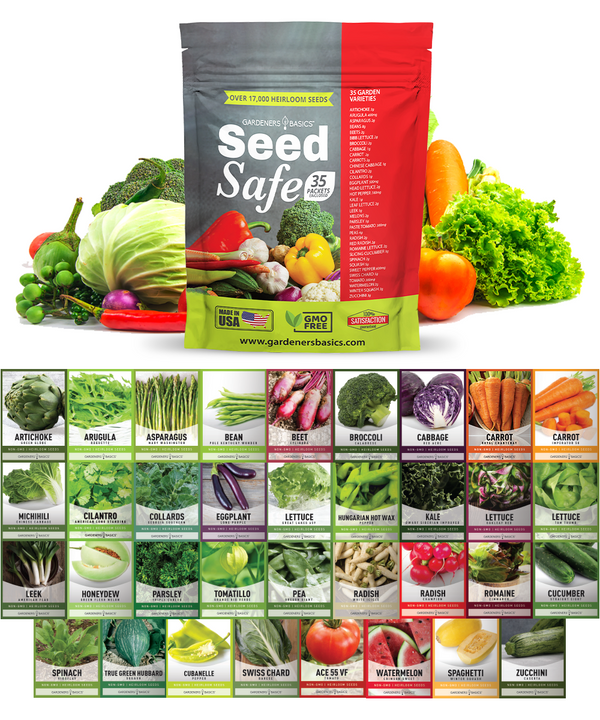
$29.95
$49.95
Seed Safe Survival Seed Kit: The Ultimate Heirloom Collection for Self-Sufficient Gardening Introducing the Seed Safe - 35 Varieties of Heirloom Vegetable, Herb, and Fruit Seeds, the ultimate solution for gardeners who want to secure a bountiful future harvest. This… read more
8. Storing and Using Lacinato Kale
Freshly harvested lacinato kale leaves can be stored in the refrigerator for up to two weeks. To preserve the leaves for longer periods, you can blanch and freeze them, or dry them for use in soups and stews.
Lacinato kale can be enjoyed in a variety of dishes, such as salads, stir-fries, and smoothies. The tender leaves can be eaten raw, while the larger, more mature leaves are best when cooked.
In conclusion, growing lacinato kale from seed is a rewarding and straightforward process. With the right care and attention, you'll be enjoying delicious, home-grown kale in no time. Happy gardening!
 Frequently Asked Questions - How to Grow Lacinato Kale From Seed
Frequently Asked Questions - How to Grow Lacinato Kale From Seed
Q: Can I grow lacinato kale in containers?
A: Yes, lacinato kale can be grown in containers. Choose a container that is at least 12 inches deep and wide to accommodate the plant's root system. Make sure the container has drainage holes to prevent waterlogged soil.
Q: What companion plants work well with lacinato kale?
A: Good companion plants for lacinato kale include herbs like dill and mint, as well as onions, garlic, and nasturtiums. These plants can help deter pests and improve the overall health of the garden.
Q: Can I grow lacinato kale year-round?
A: Lacinato kale is a cold-hardy plant that can withstand temperatures as low as 20°F (-6°C). In regions with mild winters, it is possible to grow kale year-round. In colder climates, use a cold frame or greenhouse to extend the growing season.
Q: When should I start lacinato kale seeds indoors?
A: Start lacinato kale seeds indoors 4-6 weeks before the last expected frost date in your area. This will give the seedlings a head start and allow them to be transplanted outdoors once the weather warms up.
Q: How do I know when my lacinato kale is ready to harvest?
A: Lacinato kale is ready to harvest once the leaves reach a desired size, typically 8-10 inches long. The leaves can be harvested earlier for tender, baby kale or allowed to grow larger for a more robust flavor.
Q: Can I harvest lacinato kale after a frost?
A: Yes, lacinato kale can be harvested after a frost. In fact, the frost can improve the taste of the leaves, as it causes the plant to produce more sugars, resulting in a sweeter flavor.



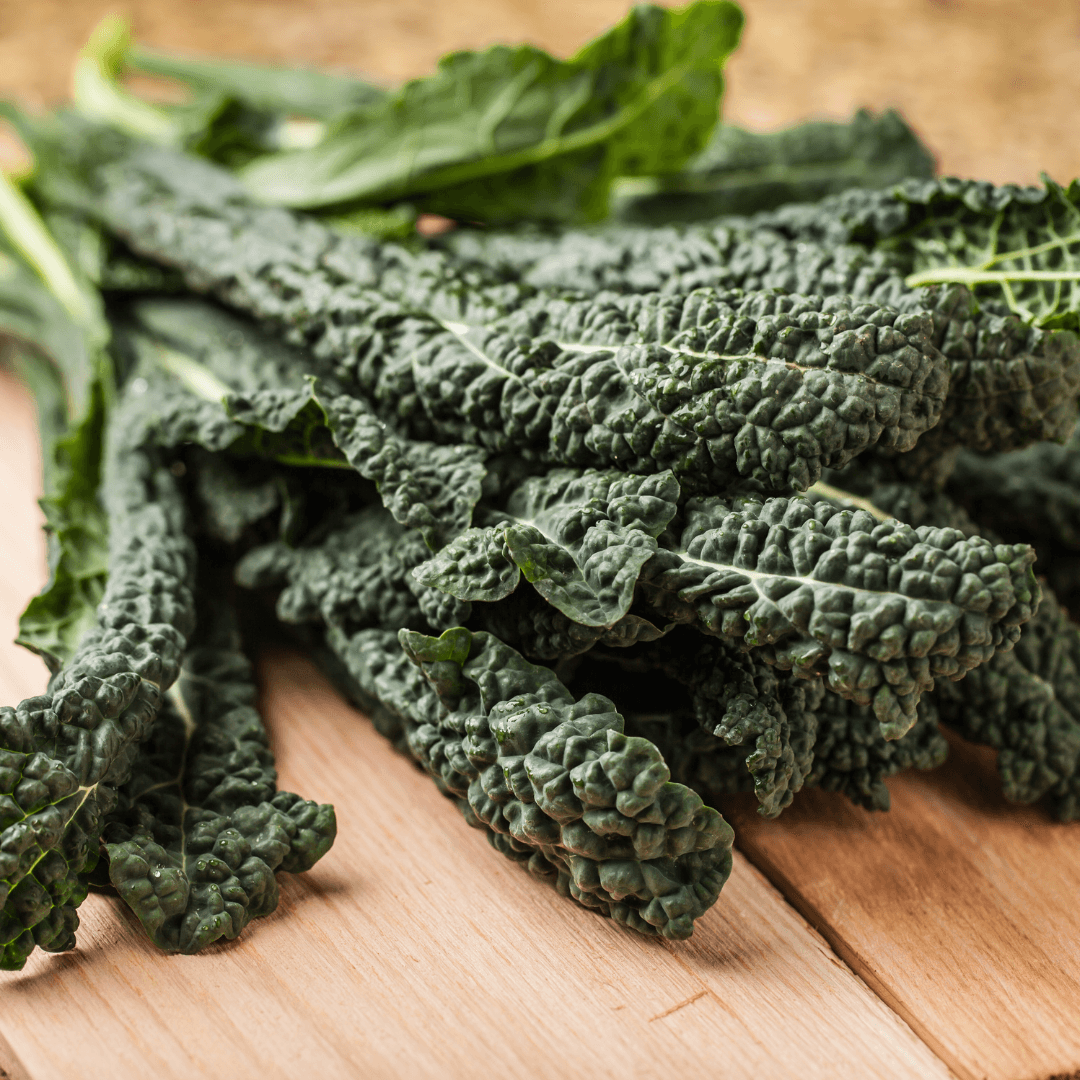

 Frequently Asked Questions - How to Grow Lacinato Kale From Seed
Frequently Asked Questions - How to Grow Lacinato Kale From Seed